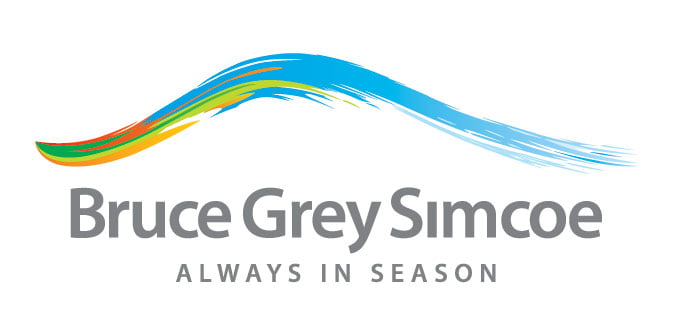
Review this sample budget template with some tips and tricks for new event planners
Expenses and In-Kind Contributions
Non-Profit Event Budget Template
| Category | Estimated Cost | Actual Cost | Notes |
|---|---|---|---|
| Venue | $2,000 | $2,200 | Rental fees, insurance, permits |
| Catering | $1,500 | $1,450 | Food, beverages, service charges |
| Marketing & Promotion | $800 | $750 | Flyers, ads, social media |
| Audio/Visual Equipment | $1,200 | $1,300 | Microphones, projectors, screens |
| Decorations | $500 | $550 | Flowers, banners, table settings |
| Entertainment | $1,000 | $1,100 | Performers, speakers, activities |
| Staffing | $1,500 | $1,600 | Wages, uniforms, training |
| Transportation | $300 | $350 | Travel expenses, parking |
| Printing | $200 | $180 | Programs, tickets, signage |
| Miscellaneous | $500 | $600 | Contingency fund, unexpected costs |
Total Estimated Cost: $9,500
Total Actual Cost: $10,080
In-Kind Contributions
| Category | Description | Estimated Value | Notes |
|---|---|---|---|
| Venue | Donated by local community center | $2,000 | Rental fees waived |
| Catering | Food donated by local restaurants | $1,500 | Includes beverages and service |
| Marketing & Promotion | Free ad space in local newspaper | $500 | Equivalent value of ad space |
| Audio/Visual Equipment | Equipment provided by sponsor | $1,200 | Includes microphones and projectors |
| Decorations | Flowers donated by florist | $300 | Floral arrangements |
| Entertainment | Performance by local band | $1,000 | No charge for performance |
| Staffing | Volunteers from community | $1,500 | Equivalent value of volunteer hours |
Total Estimated Value: $8,000
In-Kind Contributions
Valuing in-kind contributions is an important aspect of event budget planning, especially for non-profit organizations. In-kind contributions are non-monetary donations of goods or services that can help offset event costs. Here's how you can value these contributions:
- Identify the Fair Market Value: The fair market value (FMV) is the price that goods or services would sell for on the open market. To determine the FMV, research the cost of similar goods or services in your area. For example, if a local restaurant donates catering services, find out what they would normally charge for the same service.
- Obtain Written Estimates: Whenever possible, ask the donor to provide a written estimate of the value of their contribution. This can serve as documentation for your records and help ensure that the valuation is accurate.
- Use Comparable Prices: If the donor cannot provide an estimate, use comparable prices from other vendors. For instance, if a florist donates flowers, check the prices of similar arrangements from other florists in your area.
- Consider the Quality and Quantity: The value of in-kind contributions can vary based on the quality and quantity of the goods or services provided. Ensure that the valuation reflects these factors. For example, high-quality audio-visual equipment may have a higher value than standard equipment.
- Document Everything: Keep detailed records of all in-kind contributions, including the donor's name, a description of the contribution, the estimated value, and how the value was determined. This documentation is essential for financial reporting and transparency.
- Consult with Experts: If you're unsure about how to value a particular contribution, consider consulting with experts or professionals in the relevant field. They can provide guidance on how to accurately assess the value.
- Acknowledge the Contributions: Recognize and acknowledge the value of in-kind contributions in your financial reports and event summaries. This not only shows appreciation to the donors but also provides a clear picture of the event's financial landscape.
By accurately valuing in-kind contributions, you can better manage your event budget and ensure that all resources are accounted for.
Here are some common in-kind contributions for events:
- Venue Space: Many organizations or community centers may offer their space for free or at a reduced cost for non-profit events.
- Catering Services: Local restaurants or catering companies might donate food and beverages.
- Audio/Visual Equipment: Companies may provide sound systems, projectors, and other technical equipment.
- Decorations: Florists or event decorators might contribute flowers, table settings, and other decorative items.
- Entertainment: Performers, musicians, or speakers may offer their services at no charge.
- Printing Services: Printing companies might donate the printing of programs, tickets, and signage.
- Marketing and Promotion: Media outlets may provide free advertising space or airtime.
- Transportation: Local transportation companies might offer free or discounted travel services for guests and speakers.
- Staffing: Volunteers from the community can help with various tasks, reducing the need for paid staff.
- Gift Bags and Prizes: Businesses may donate items for gift bags or prizes for raffles and contests.
These in-kind contributions can significantly reduce the overall cost of an event and help ensure its success.
Expected Income
Budgeted Income
| Income Source | Estimated Income | Actual Income | Notes |
|---|---|---|---|
| Ticket Sales | $5,000 | $5,200 | Revenue from ticket sales |
| Sponsorships | $3,000 | $3,500 | Contributions from sponsors |
| Donations | $1,500 | $1,300 | Donations from attendees and supporters |
| Grants | $2,000 | $2,000 | Grants from organizations |
Total Estimated Income: $11,500
Total Actual Income: $12,000
Net Profit/Loss Calculation
| Description | Amount | Notes |
|---|---|---|
| Total Estimated Income | $11,500 | |
| Total Estimated Cost | $9,500 | |
| Estimated Net Profit/Loss | $2,000 | |
| Total Actual Income | $12,000 | |
| Total Actual Cost | $10,080 | |
| Actual Net Profit/Loss | $1,920 |
Net Profit or Loss Calculations
Calculating net profit or loss for an event involves subtracting the total expenses from the total income. Here's a simple formula to follow:
Net Profit/Loss = Total Income - Total Expenses
Let's break it down with an example using the budget template we created:
- Total Income: This is the sum of all the income sources for the event. For example:
- Ticket Sales: $5,200
- Sponsorships: $3,500
- Donations: $1,300
- Grants: $2,000
- Total Expenses: This is the sum of all the expenses for the event. For example:
- Venue: $2,200
- Catering: $1,450
- Marketing & Promotion: $750
- Audio/Visual Equipment: $1,300
- Decorations: $550
- Entertainment: $1,100
- Staffing: $1,600
- Transportation: $350
- Printing: $180
- Miscellaneous: $600
- Net Profit/Loss: Subtract the total expenses from the total income.Net Profit/Loss = Total Income - Total Expenses Net Profit/Loss = $12,000 - $10,080 = $1,920
In this example, the event has a net profit of $1,920. If the total expenses had been higher than the total income, the result would be a net loss.


